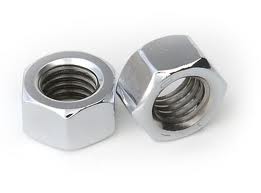
Chromium is a chemical element which has the symbol Cr and atomic number 24, first element in Group 6. It is a steely-gray, lustrous, hard metal that takes a high polish and has a high melting point. It is also odorless, tasteless, and malleable. The name of the element is derived from the Greek word "chrōma" (χρώμα), meaning colour because many of its compounds are intensely coloured. It was discovered by Louis Nicolas Vauquelin in the mineral crocoite (lead chromate) in 1797. Crocoite was used as a pigment, and after the discovery that the mineral chromite also contains chromium, this latter mineral was used to produce pigments as well.
Chromium was regarded with great interest because of its high corrosion resistance and hardness. A major development was the discovery that steel could be made highly resistant to corrosion and discoloration by adding chromium to form stainless steel. This application, along with chrome plating (electroplating with chromium) are currently the highest-volume uses of the metal.
Chromium and ferrochromium are produced from the single commercially viable ore, chromite, by silicothermic or aluminothermic reaction or by roasting and leaching processes. Although trivalent chromium (Cr(III)) is required in trace amounts for sugar and lipid metabolism, few cases have been reported where its complete removal from the diet has caused chromium deficiency.
In larger amounts and different forms chromium can be toxic and carcinogenic. The most prominent example of toxic chromium is hexavalent chromium (Cr(VI)). Abandoned chromium production sites often require environmental cleanup. Source www.wikipedia.org
